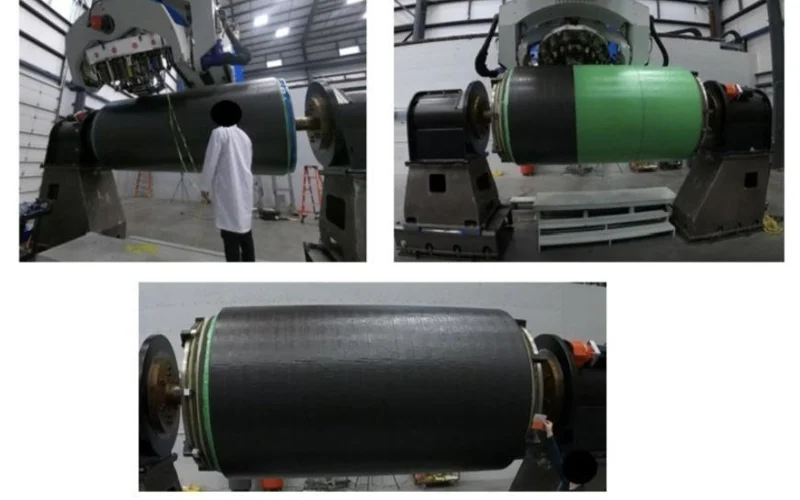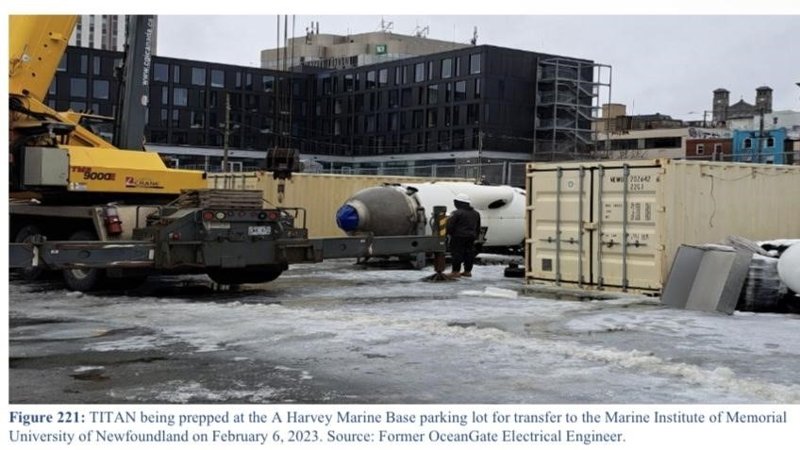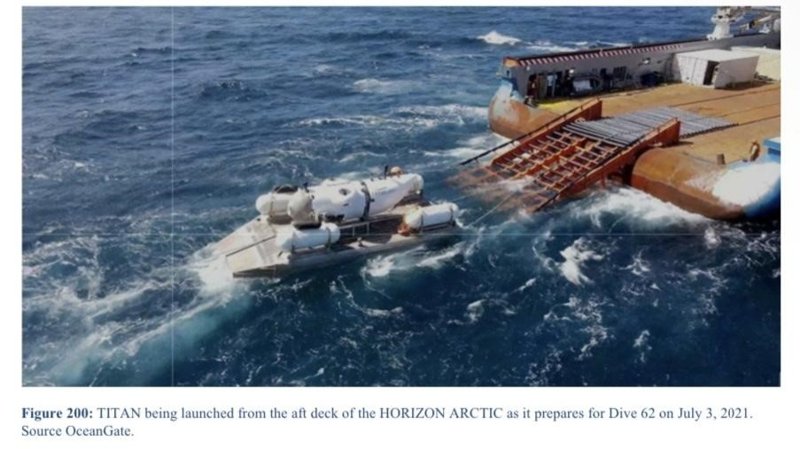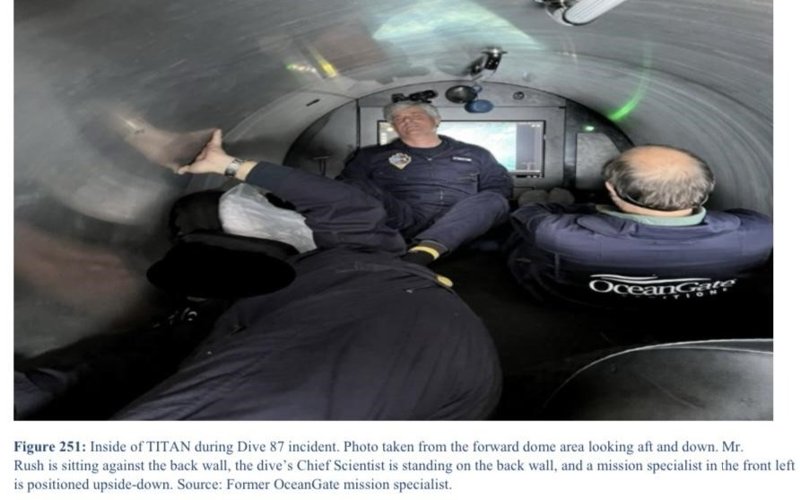Design flaws and toxic culture: Inside the report on the ‘preventable’ OceanGate tragedy
A U.S. Coast Guard Marine Board of Investigation (MBI) has released its findings on the 2023 Titan submersible tragedy, which claimed five lives near the wreck of the Titanic. The 335-page report determined that the immediate cause was the vessel’s carbon fiber pressure hull losing its structural integrity, a failure rooted in past engineering decisions, company policies, and poor risk management. Kazinform News Agency correspondent reports on the key findings.

Design failures and technical issues
The report’s findings indicate that the Titan’s pressure hull, the main structural shell, was made from carbon fiber, a material not recommended for such depths because of its limited ability to endure extreme compressive forces.
Investigators concluded that the failure likely originated either in the structure itself or in one of the adhesive joints connecting the cylindrical hull sections to the titanium end domes, which were both exposed to extreme pressure during the dive. Unlike the steel hulls used in other OceanGate submersibles, carbon fiber had no established record of safe performance at these depths.
“The TITAN’s pressure hull was constructed using carbon fiber, a material chosen by Mr. Rush [OceanGate’s CEO, Stockton Rush] for its ‘impressive’ strength-to-weight ratio. Carbon fiber composites offer high strength while significantly reducing weight compared to other materials traditionally used in submersibles, such as steel or titanium. However, while the strength-to-weight ratio was a considerable advantage, the use of carbon fiber in deep-sea environments remains unproven—unlike the materials with established safety records. There are currently no recognized national or international standards that approve of the use of carbon fiber pressure hulls for submersibles. Carbon fiber has demonstrated its effectiveness in other applications where the material is primarily under tension (e.g., aircraft hulls where the pressure inside the passenger compartment is pressing outwards). However, in deep-sea conditions, the pressure hull experiences extreme compressive forces, a scenario for which carbon fiber has no established track record and is generally understood to be less effective. (…) Carbon fiber is composed of tightly packed carbon atoms arranged in a crystalline structure that offers high strength in specific directions but minimal flexibility. When subjected to stress beyond its limit, carbon fiber does not significantly bend or stretch prior to failure. In a composite structure, carbon fibers are usually embedded in a resin that adds some flexibility; however, the fibers themselves are prone to breaking or cracking under excessive force, and once damaged (i.e., individual fibers break), the material permanently loses some strength in the affected area, which is nearly impossible and highly impractical to repair in a structure like TITAN’s hull,” the report explains.
Previous to the incident, in May 2019, a pilot discovered a 1.2 meter crack in the carbon fiber hull during a pre-dive inspection in the Bahamas. An engineering director’s follow-up assessment found the damage to be worse than initially thought. Still, OceanGate did not notify clients, regulators, or classification societies. Instead, Rush aimed to conduct quick repairs and return the vessel to diving operations within weeks. The engineering director opposed diving with a damaged hull but was dismissed shortly after raising concerns.
It was also revealed that the Titan suffered “irreversible” damage in July 2022 after becoming entangled in the Titanic wreck. Despite later dives showing abnormal hull responses, full inspections or necessary repairs were not undertaken. In addition to the damages, the report raised concerns over improper storage practices. Between the 2022 and 2023 operating seasons, Titan was kept outdoors in a Canadian lot for seven months, exposed to temperatures from 29.0°C to −17.0°C, potentially weakening the carbon fiber.

“OceanGate’s consistent pattern of neglect - evident in its disregard for proper storage, operational shortcuts, and failure to conduct rigorous safety assessments - underscores their troubling prioritization of cost and time-saving measures over safety. OceanGate’s repeated prioritization of financial expediency over operational safety had dire consequences that could have been avoided with more responsible decision-making. If the TITAN had been properly stored in a controlled environment, shielded from inclement weather conditions, its structural integrity might have been better preserved,” the report states.
Between 2021 and 2023, Titan continued to experience recurring technical issues that were not fully repaired, with recommended inspections skipped to cut costs.
Safety, leadership, and financial pressures
The MBI report identifies a “toxic safety culture” at OceanGate, where decision-making and safety oversight were concentrated under CEO Stockton Rush. Staff who raised safety issues were often sidelined, ultimately limiting independent review of risky decisions.
“Rush was essentially OceanGate’s CEO, safety officer, and primary submersible pilot, which enabled him to set operational safety parameters and then make all final decisions for TITAN operations without adequate input or checks and balances. (…) The cumulative effect was an authoritarian and toxic culture where safety was not only deprioritized but actively suppressed. This toxic environment, characterized by retaliation and belittling against those who expressed safety concerns, combined with a lack of external oversight, set the stage for the TITAN’s ultimate demise. (…) Instead, the company’s systemic failures created an environment where risks were ignored, and consequences were inevitable. In conclusion, OceanGate’s failure to prioritize safety stemmed from deep-rooted flaws in its leadership structure, culture, and operational practices. (…) His multiple roles (…) enabled him to gradually solidify his centralized and dominant control over all OceanGate decisions and operations. This corporate structure, combined with the absence of meaningful external oversight and management’s dismissive attitude toward safety concerns, created an environment that enabled TITAN to continue operating with the threat of its eventual implosion growing to almost a certainty,” the report highlights.

Financial instability of the company added to the long list of the risks. In 2023, some employees were asked to work without pay, and the engineering director position remained unfilled. The company leaned on contractors, switched to text-only communications, and continued cost-saving storage practices.
“OceanGate’s financial instability impacted its inability to retain a stable and qualified workforce, which had profound negative implications… As a result, OceanGate increased its reliance on contractors, mission specialists, and junior staff members who lacked critical background on TITAN’s operating history and the seniority to challenge Mr. Rush’s authority and decision-making,” the report states. “OceanGate repeatedly prioritized operational goals and financial considerations over safety, ignoring warnings from both industry experts and internal staff. Had OceanGate taken the warnings more seriously, involved independent safety experts, or adhered to more rigorous testing and safety protocols, many of the risks that contributed to the eventual implosion could have been mitigated or avoided entirely.”
The report further criticizes marketing practices that exposed OceanGate’s vulnerabilities even further. Passengers labeled as “mission specialists” were often paying clients with negligible roles in operations. Safety training was insufficient, waivers tackling death were only explained post-arrival, and fees were non-refundable, creating pressure to proceed with risky dives.

OceanGate’s former director of marine operations, with over 25 years of subsea experience, described the company’s focus as being on “image and marketing” rather than building a safe and reliable operation. He reported poor communication between engineering and operations, inexperienced staff, and a lack of leadership experience in submersible design. Notably, none of the leadership, including Rush, had previous submersible design experience.
“A false sense of safety and security was created by Mr. Rush through his misrepresentation of the TITAN's safety, achieved by falsely claiming substantial safety margins, misleading mission specialists regarding testing procedures, and exaggerating the number of hull test dives for the final TITAN hull,” the report states. “OceanGate's management, particularly Mr. Rush, fostered an organizational culture that increased operational risk and allowed financial pressures, operational demands, and mission specialist expectations to override their mission director’s duties and authorities.”
Risk management and emergency response failures
The report highlighted inadequate safety protocols. Passengers received waivers noting the vessel’s uncertified, experimental status only upon arrival. Training for critical tasks, such as securing the forward dome, was minimal.
During the incident itself, when contact was lost on June 18, 2023, the support ship Polar Prince followed OceanGate’s internal rules rather than best practices. The last message was received at 10:47:26 a.m., just after the implosion occurred. The crew heard a “bang” just two seconds after the implosion but did not interpret it as an emergency. Ultimately, the search and rescue operation was not notified until more than seven hours later.

“Subsequent to the implosion, the individuals aboard TITAN were subjected to approximately 4,930 psi, resulting in the instantaneous death of all five occupants,” the report states.
In conclusion, the MBI attributed the disaster to “loss of structural integrity of the Titan pressure vessel,” with failures in both the carbon fiber hull and adhesive joints. With all the findings in mind, the U.S. Coast Guard’s Marine Board of Investigation underscored that “Five people died when the commercial submersible TITAN imploded on June 18, 2023, in what is considered to be a preventable tragedy.”
Titan submersible, operated by Ocean Gate, imploded near the wreckage of the Titanic June 18, 2023, killing all five passengers on board. The submersible went missing more than 600 kilometers off the coast of Newfoundland in eastern Canada. Those aboard the submersible were Stockton Rush, the American CEO of OceanGate; Paul-Henri Nargeolet, a French deep-sea explorer and Titanic expert; Hamish Harding, a British businessman; Shahzada Dawood, a Pakistani-British businessman and his son Suleman. On June 28, the U.S. Coast Guard said that it had recovered «presumed human remains» from the wreckage of the Titan submersible.
